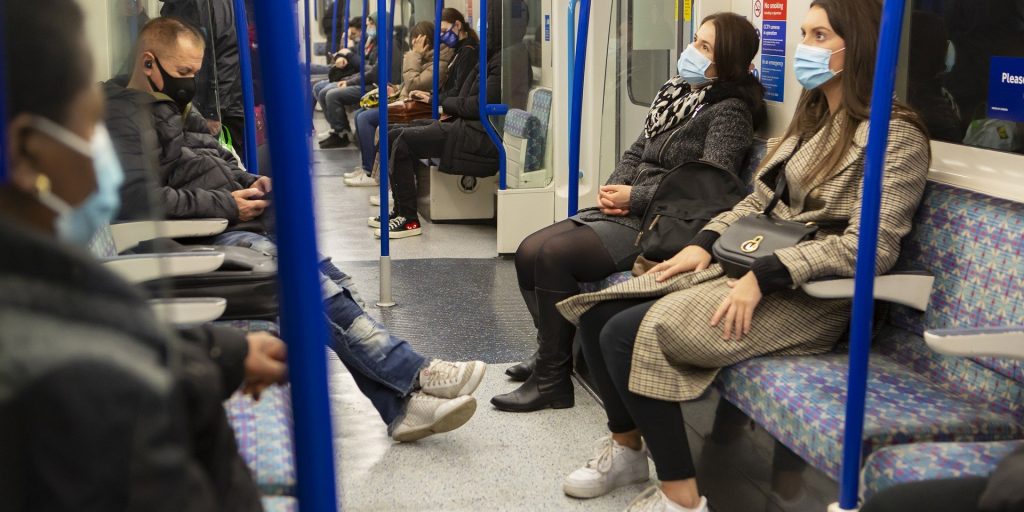New pandemic recovery tools for public transit
While much of the nation has been locked down for nearly a year, essential workers across the country have kept the fundamental aspects of society functioning despite the risks associated with the COVID-19 pandemic. Mass transportation agencies and operators have been at the forefront of this effort remaining committed to transporting critical personnel that depend upon mobility services to safely get to and from work and keep our cities in motion.
One of the many challenges transit systems have faced during the pandemic is how to maintain the right level of service and handle budget deficits as a result of reduced ridership and lower tax revenues due to shutdowns. For the health of their employees’ as essential workers and those essential workers still depending on transit services, they also battled how to ensure a safe transit experience.
As part of a commitment to improve on-board safety for operators and riders, the industry has taken cues from health officials. Early guidance was initially focused on daily or “episodic” surface cleanings—sanitizing and disinfecting the interior of buses and rail vehicles. As scientists with the Centers for Disease Control and Prevention (CDC) have worked diligently to understand the transmission risks of the virus, it is now common knowledge that the highest risk of transmission is through airborne virus particles. Meaning that the air we breathe, especially in enclosed spaces, has a high probability of carrying virus particles, which can linger in the air for substantial periods and is particularly concerning given how many COVID-19 cases are asymptomatic. This is supported by recent executive action of President Joseph Biden in coordination with the CDC mandating all riders of intercity buses and transportation networks remain fully masked while on-board.
Until now, the most common solutions used in transit are disinfectants applied to inactivate viruses on surfaces, or UV lights to kill virus particles from respiratory droplets once they have landed. While both methods may be effective at disinfecting surfaces, those efforts and investments are quickly negated the moment an infected passenger steps on-board and emits virus particles into the air. To reduce spread of the coronavirus in the air, a “continuous intervention” will be required to help return riders safely to the enclosed spaces that make up our transit systems.
The scientific community, technology and mass transit leaders have been hard at work developing solutions specifically effective in the transit and transportation environments, including sophisticated and intelligent technology hardware and software that administers an antimicrobial continuous air treatment. A game changer for cities, counties and mass transit systems everywhere as it will provide an added layer of continuous protection to combat COVID-19 in the air, where transmission is most likely. Given the use of these solutions in enclosed spaces, environmental authorities, including the United States Environmental Protection Agency (EPA), are actively involved in ensuring the safety for general and at-risk populations for this and other settings including healthcare and manufacturing facilities.
With a continuous intervention solution, the air automatically remains treated and provides more protection for riders and the operator, even as people embark and disembark a transit bus or train. Not only does this method of continuous intervention provide protection against airborne virus particles, but it has the potential to also significantly reduce the additional labor force required to wipe down and spray interiors, not to mention the risks to those employees who perform these tasks.
Along with incomplete protection, the expense associated with manual disinfecting has further exacerbated budget issues for transit agencies already facing unprecedented financial challenges. For example, the office of the New York State Comptroller reports MTA’s estimate of additional cleaning costs to increase more than 300 percent from 2020 expenses. Delivering a continuous and more effective solution at a lower cost, and reducing labor expenses is critical for helping transit agencies bridge the growing gap between revenue and increasing expenses.
Early guidelines and cleaning recommendations were certainly justified before we had the intelligence about the virus transmission that we have today. Innovators have been hard at work studying the virus’ habits and vulnerabilities. The guidelines and recommendations from city leaders, health officials and other experts should be carefully reviewed to reconsider the science and effectiveness of solutions available. A reconsideration will also allow decision makers the opportunity to weigh the budget and time savings any given method will have on transit systems, many of which, are still requiring daily operational shutdown to disinfect seats, walls and poles with human-administered disinfecting sprays and wipes.
Nearly a year after the pandemic has begun, we still have many lessons to learn. But one thing is certain—we must continue to invest in the critical infrastructure and support systems that keep our society moving. At this point in time, our recovery from the pandemic will depend on the steps we take today to safely return to work, school, and life’s daily normality’s. Mass transportation is a necessary link—and one that must be fully protected to support maximum recovery.
Kirk Goins is CEO of Luminator Technology Group, a global manufacturer of technology, communication and safety solutions for mass transit applications. Goins’ oversight includes the organization’s development of integrated best-in-class solutions for on and off-bard passenger information, video security, lighting and other solutions designed to increase the safety, efficiency and intelligence of transit operations.




















